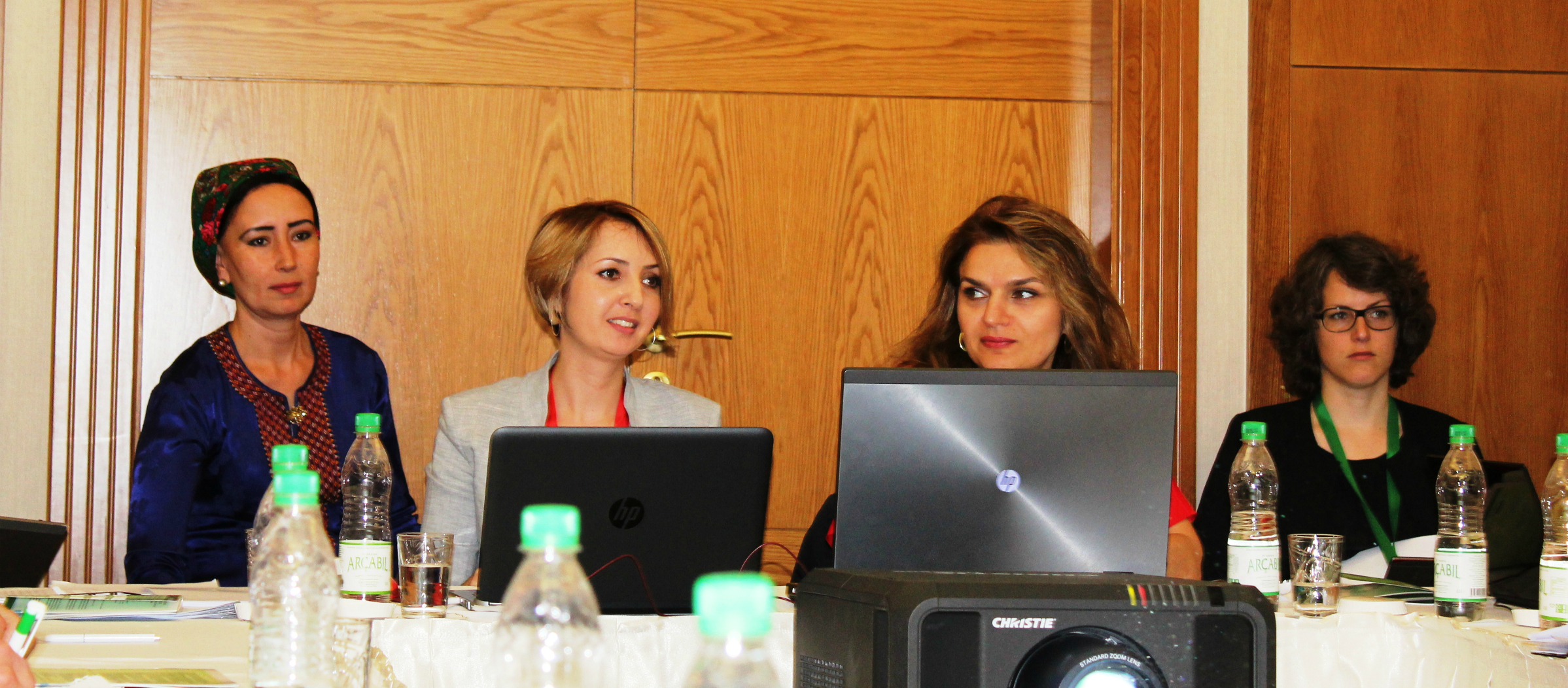CAIEF: opportunities to address climate risks in Central Asia
During the third day of the Central Asian International Environmental Forum, six parallel discussions were held, including a side event on climate change, where participants discussed opportunities to address climate risks in Central Asia.

At the beginning of the session Ms Jamila Baydulloeva, Head of the Weather Forecast Centre, Director of the State Administration National Agency for Hydrometeorology of the Republic of Tajikistan and Ms Natalia Agaltseva, Head of Department of projects preparation and monitoring for the Centre of Hydrometeorological Service at Cabinet of Ministers of the Republic of Uzbekistan presented their statements for the participants.
Further, the representatives of international and regional organizations presented planned events highlighting priorities and potential approaches to identification and reduction of climate risks in Central Asia. Statements were presented by Mr Pradeep Kurukulasuriya, Head of Climate Change Adaptation for Global Environmental Finance Unit at Bureau for Policy and Programme Support, UNDP; Mr Philippe Ambrosi, Senior Environmental Economist of the World Bank; Mr Atabek Umirbekov, Climate Change Specialist of CAREC; Mr Jan Pokorný and Mr Vladimír Jirka, researchers from ENKI, o.p.s.
Ms Gayane Minasyan, Lead Environment Specialist, World Bank and Ms Nailya Mustaeva, Climate Change and Sustainable Energy Program Manager for CAREC moderated the session.
Summary of the discussions:
Global warming leads to an increase in the frequency of climate-dependent dangerous natural phenomena: the increase in periods with drought and heat waves, a change in the regime of water resources, which, if there are no measures to mitigate the consequences of these phenomena, may lead to increased losses in agricultural production, health of the population, and a decrease in the level of well-being of climate-vulnerable communities. It is impossible to avoid dangerous climatically-caused phenomena, but the management of dangerous phenomena must go along the path of creating a set of measures and actions that will help to avoid or mitigate the negative consequences and risks of these phenomena.
In particular, in order to prevent natural disasters caused by climate change, the improvement of early warning and response mechanisms plays a special role, which implies close coordination between national agencies dealing with emergencies, hydrometeorological observations, and public health. A number of successful initiatives in this direction have already been implemented in the countries of Central Asia, including as an example of the Information and Diagnostic Assessment of the Risk of Emerging Floods in Tajikistan and the early warning system of drought in Uzbekistan, targeted projects that reduce climate risks and integrate adaptation measures in Turkmenistan.

Climate risk management at the local level includes the identification of adaptation measures that contribute to strengthening resilience to expected adverse climate events. In this case, adaptation to climate change should take into account local socio-economic context. One of the strategies for managing climate risks at the local level can be diversification of agricultural practices through the introduction of new agricultural technologies and practices. This approach is currently being implemented within the framework of the project CAMP4ASB.
Participants noted that adaptation to climate risks requires significant financial resources, which will require the mobilization of both public and private finances. With limited financial resources currently available for adaptation to local climate level, the importance of technical and financial assistance provided by multilateral development banks is increasing.
